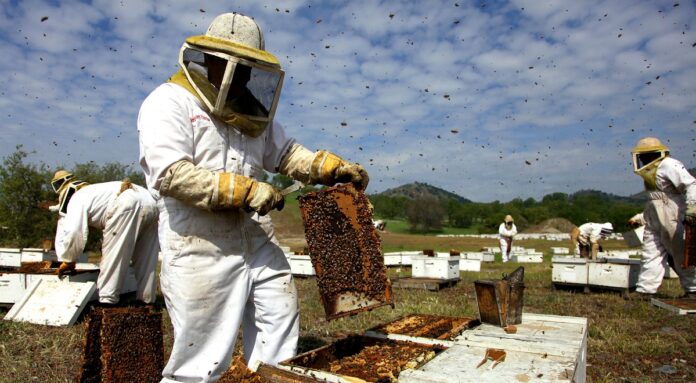Selecting sites for apiary/beehives is very important for the success or otherwise of apiculture or beekeeping. Poor siting of an apiary may lead to lower production in honey and a high cost of production. Also, conflicts with human and many others. It is, therefore, necessary to consider factors that will improve the life and activities of bees for higher honey production.
Read to the end, you will know where best to keep your apiary or beehives.
Read also: Beekeeping, Types of Bees and Importance of Beekeeping
1. Availability of flowers
Site your apiary near a nectar source like flowering trees and shrubs, food crops and cash crops. Also, a beekeeper should know the flowering periods of the various plants in and around the apiary.
2. Availability of water
Place your apiary close to a permanent source of water. But, if there is no permanent source, you can provide water in neat colourful bowls or containers. Put floating sticks in the bowls for bees to step on to avoid drowning.
Water is a necessity for bees for various uses in the hive. Uses like cooling (temperature regulation), feeding of larvae and own use.
Read also: Detailed Guide to Rabbit Production and Management in Ghana
3. Accessibility and topography
An apiary must be accessible for easy management. And also for transporting honey. Flat or gentle sloppy lands are more preferred for an apiary for easy management.
4. Shelter or Shady area
Protect beehives against strong winds direct sunlight and wind blowing off the top covers. The swinging of the beehives makes the bees rowdy and hostile. You can do this through the use of trees for shade and as a windbreak. You can also use artificial shades.
5. The proximity of human activities or human conflicts
Place an apiary away from public places. Areas where human activities take place every day. Avoid areas close to schools, markets, hospitals, playgrounds, highways, cultivated fields etc. Bees can attack people.
6. Presence of pests and the use of pesticides
An apiary should be free from areas with frequent attacks by pests (honey badger, ants and man). Site your apiary should far from fields which are sprayed with pesticides to avoid bee poisoning and honey contamination.
7. Drainage
We recommend a well-drained site so the hives are not washed away by a flood. Also, waterlogged soils cause decay of hives.
In Summary
A well-sited apiary/beehives are almost permanent and productive over a longer period.


